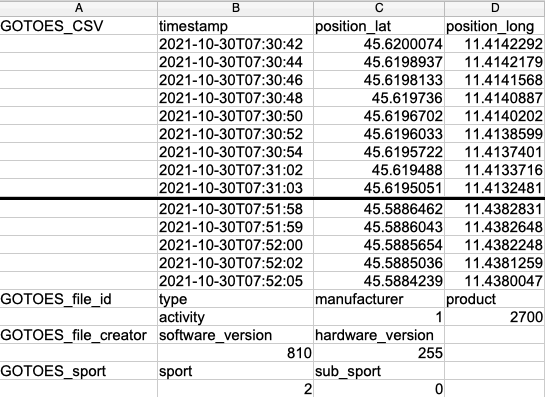Accepted File Types:
GPX:
This used to be the old standard for GPS, but it only can include Latitude, Longitude, and Elevation. Strava has a special non-standard format that allows one to embed Heart Rate, Temperature, Power, and Cadence. If you export GPX from this tool, it will use the Strava non-standard format which may not be accepted by some programs
TCX:
This is Garmin's early attempt at embedding additional data in a position (GPX) file. These files will include Latitude, Longitude, Elevation, Heart Rate, Power, and Cadence - but NOT Temperature.
FIT:
These Files contain every bit of data you can imagine tracking. At this time, the tool ONLY reads in Latitude, Longitude, Elevation, Heart Rate, Calories, Power, Cadence and a few other supporting variables. Also, on the next page, you can choose to import "Developer Data", which are the Garmin ConnectIQ fields present in some files. The reason I don't import all of the data is that some people try to upload 20+ activities at a time, and if you import all of that data at once, the tool can crash.
CSV:
You can import CSV files - but they need to be carefully formatted! The first row must contain the column headers. There must be one and only one "Timestamp" header. Your CSV can be comma or tab delimited. For more info on proper CSV format, click here (opens new window).
ZIP:
Any of the above formats can be placed in a ZIP file to save yourself upload time. For more info on how to make your ZIP files, click here.
DIRECT FROM STRAVA:
This early-access feature is currently only for my Donation Supporters. Please let me know if you encounter any issues with uploads directly from Strava. You can mix-and-match meaning that you could select one file from your Strava by checking a box - and merge it with a file uploaded from your desktop computer. Because this feature is new, I need to know if you encounter any issues! If, instead, you want to Merge GPS files from your Garmin Connect Account, Click Here.
SAFARI ISSUES
How to work-around Safari 14.0.2 being broken. As of November, 2020, Apple has broke the "Choose File" button... for some people using Safari 14.0.1 browsers. I have rewritten the button code to try and work-around this bug, which I suspect they will fix soon. If you do decide to add more "Choose File" buttons by clicking the link for iOS buttons, please make sure that you at least select a file with the first (top) button. If no file is selected with that button, you will get an error


